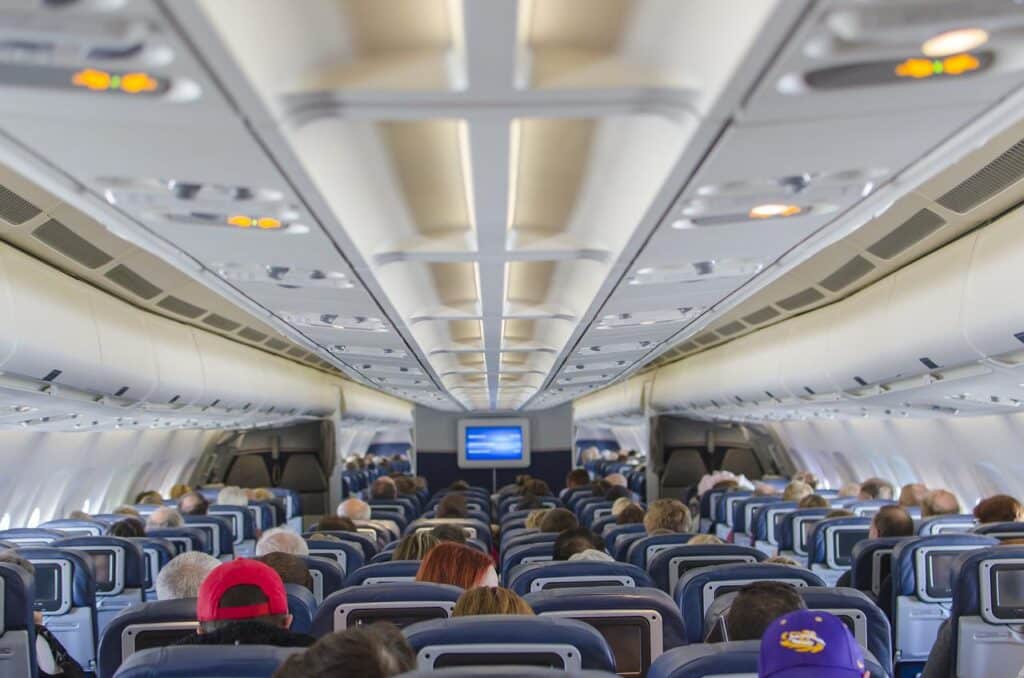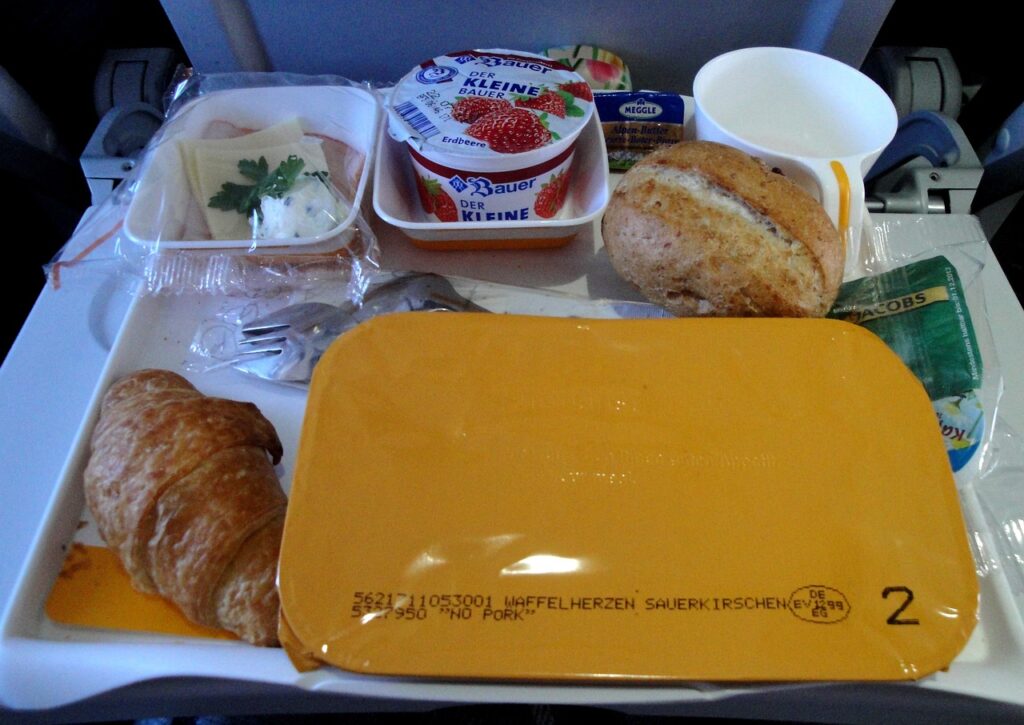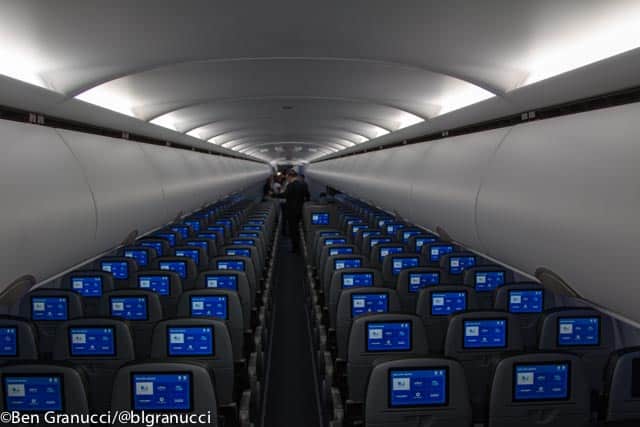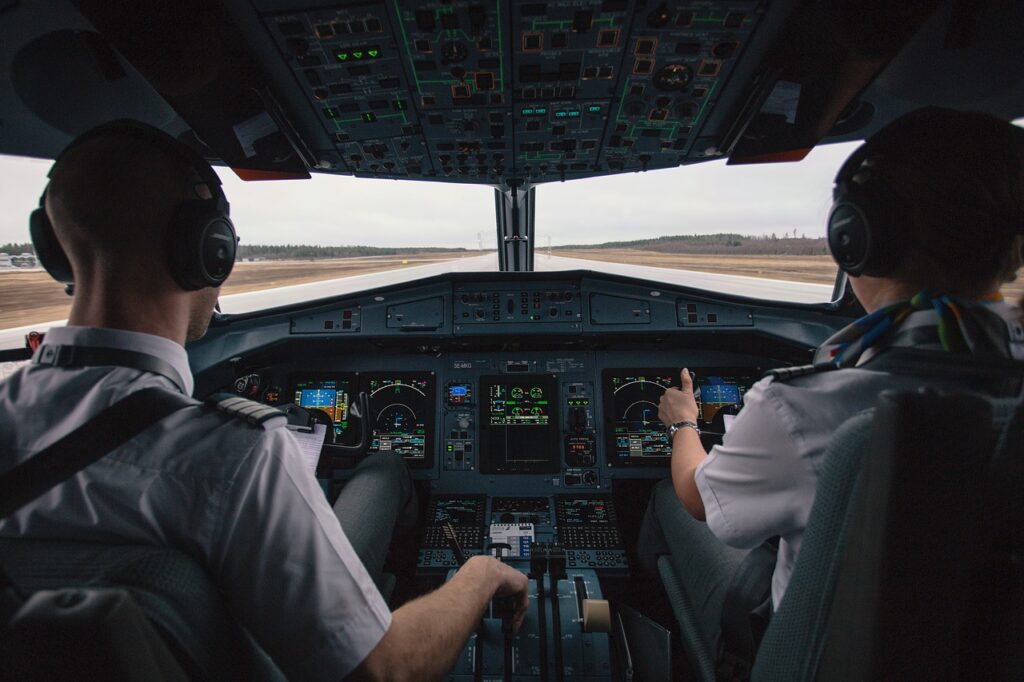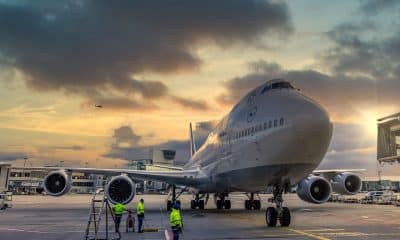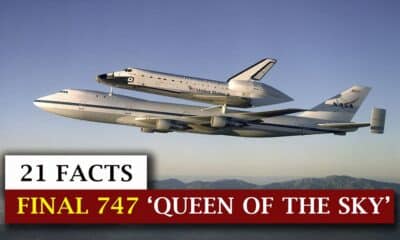Aerospace
10 Amazing Facts You Probably don’t know about airplanes
Here are some incredible facts about airplanes that you probably didn’t know. Now, let’s study in this section.
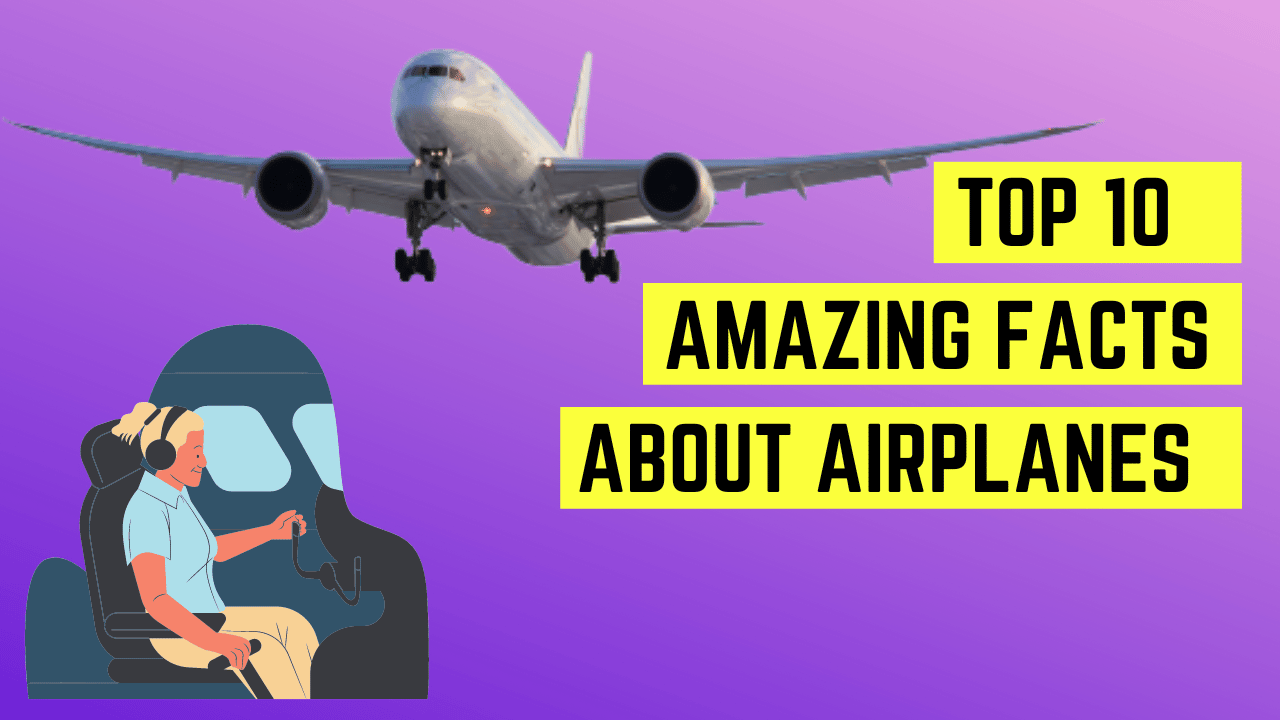
Here are some incredible facts about airplanes that you probably didn’t know. Now, let’s study in this section.
The Wright Brothers discovered the first plane in the air at Kitty Hawk, North Carolina, in 1903. Both have undergone a significant transformation, and the wooden and fabric contraptions of the past are very different from the enormous, sleek-looking Boeing Dreamliner of the present. It is difficult to keep track of the incredible facts that might be accomplished by modern airplanes given the rapid improvement of aircraft technology with each passing day.
1. What are the safest seats on an airplane?
According to the FAA data study, The middle seat in the back/rear of the aircraft had the lowest death rate (28%), and the majority of aviation professionals agree that the back of the aircraft is less risky than the front. A study by Popular Mechanics website found that those sitting towards the plane’s tail had a 40% higher chance of surviving a crash than those in the front, and the middle seats in the back of the plane had the best chances of surviving.
2. Airplane Tyres Don’t Explode on Landing Because They Are Pumped
When you consider it, airplane tires are very incredible. A 38-ton weight may be supported by standard airplane tires. It can touch the ground 500 times before needing to be retreaded and it is strong enough to hold aircraft weight, and it can be refreshed seven times throughout its lifespan. The first few seconds after a plane lands, the tires are sliding rather than rolling. They are essentially dragged by the airplane down the runway until their rotating speed is equal to that of the aircraft. They smoke as they land for this reason.
[the_ad id=”15765″]
3. Some planes have secret bedrooms
Some aircraft like Boeing 777 and 787 that contain a hidden staircase that leads to a small number of windowless bedrooms, allowing passengers to stretch out in their seats during lengthy flights. This enables crew members to rest without being disturbed, or to take a power nap. There are times when certain rooms are designated for pilots only. The majority of airplanes have the crew sleeping accommodations located behind the cockpit, above the first-class seats, despite different designs.
4. Why does plane food taste is strange
The taste of airline meals is a frequent source of criticism. However, they don’t take into account adequately the fact that they are flying at 500 mph in a pressurized cabin at a height of about 30,000 feet. The dry air at high altitudes interferes with taste receptors’ ability to detect flavors, in addition to the low pressure that reduces scent. Studies have revealed that traveling by plane might cause a 30% reduction in taste perception. Food is often over-salted and unsweetened by airlines as a form of compensation, which slightly detracts from the flavor.
[the_ad id=”15771″]
5. Airplanes window have Tiny holes
A tiny hole that has several roles than primarily being unsightly. Although tiny, the hole really contributes to passenger safety. It all ultimately comes down to pressure, the lower the oxygen at a certain height, the more likely it is that a person may feel sick and out of breath. The tiny hole in the interior window is to regulate the pressure for the middle pane to remain intact until an unlikely event occurs.
These are the top 10 Low cost airlines in the world for 2022(Opens in a new browser tab)
6. Ashtrays are seen in the Bathroom
There are still ashtrays in airline restrooms despite the FAA’s long-standing ban on smoking in aircraft. Despite a no-smoking policy and multiple no-smoking signage, airlines have reasoned that at some point, a chain smoker passenger would decide to light up a cigarette aboard an aircraft. This is the justification given for the placement of these ashtrays. If they do, it will be in a small space, like the airline bathroom. When it comes to disposal, they would put the cigarette butt in the ashtray rather than the trash can where it can catch fire. Be warned, though, as smoking in an airline bathroom carries a huge penalty.
Can the tracking of in-flight catering improve airline sustainability.(Opens in a new browser tab)
7. Why planes leave trails in the sky
Condensation trails are what give those white streaks in the sky their scientific name of “contrails.” During the combustion process, water vapor is released from airplane engines. The puffy white lines in the sky are the result of hot water vapour being pushed out of the exhaust and interacting with the cooler higher atmosphere. It’s similar to how you feel when you can see your breath in a cold environment.
[the_ad id=”15766″]
Boeing Forecasts Demand for More than 41,000 New Airplanes by 2041(Opens in a new browser tab)
8. Dim cabin lights during takeoffs and landings at night
During night takeoffs and landings, airlines mostly reduce their cabin lighting for safety reasons. It makes the area safer by making it simpler for passengers to locate the emergency exits and enabling them to adjust their vision in case of an emergency.
9.Piolts and Co-pilots are required to eat different meals on the plane
In order to limit the chance of pilots getting sick, separate meals are served to the pilot and co-pilot. In an interview of a Korean pilot conducted by CNN in the year 2012, it was revealed that pilots and co-pilots are served separate food to avoid food poisoning.
10. Planes can fly with one engine and land with none
A twin-engine aircraft can still fly flawlessly with just one engine. Even with just one engine, it can still continue the takeoff and land without incident. The majority of the time, an engine failure in flight is not a serious issue, and pilots receive considerable training on how to handle such a circumstance.

Aerospace
Indigo will soon launch Air Taxi Service in India

InterGlobe Enterprises, the parent brand of IndiGo, is set to revolutionize travel in India with its upcoming air taxi service.
Scheduled for a potential launch in 2026, this innovative venture promises a seamless journey for passengers between two bustling hubs. Delhi and Gurgaon in Haryana. The forthcoming service is projected to revolutionize the daily commute, offering passengers a swift aerial journey covering the distance in a mere 7 minutes.
This remarkable efficiency contrasts starkly with the conventional 90-minute drive, underscoring the immense time-saving potential for commuters. The anticipated fare, ranging from Rs 2,000-3,000, makes this innovative mode of transport not only swift but also remarkably competitive in pricing.
At the heart of this ambitious endeavor lies a strategic partnership with Archer Aviation, a pioneer in electric vertical takeoff and landing (eVTOL) aircraft technology. Under this collaboration, Archer will supply 200 state-of-the-art eVTOL aircraft, representing an investment of US$ 1 billion. These cutting-edge aircraft, capable of accommodating up to four passengers alongside the pilot, epitomize the future of sustainable air travel.
Powered by six battery packs, Archer’s eVTOL aircraft boast rapid charging capabilities, enabling a swift turnaround between flights. With a charging time of just 30-40 minutes, these eco-friendly aircraft ensure minimal downtime, maximizing operational efficiency.
Similar services are anticipated to be introduced by the joint venture in Bengaluru and Mumbai as well. Nevertheless, the service rollout period has not yet been made public by the company. Next year, it is anticipated to get its certification. Following this, the company will start the certification procedure with the Directorate General of Civil Aviation (DGCA).
Aerospace
Which is bigger 777x or 787 aircraft ?

The 777X is a new series of the Boeing 777 family and is designed to be larger and more efficient than its predecessor. It features two variants: the 777-8 and the 777-9, being the larger of the two.
The Boeing 777X emerges as the larger sibling within the Boeing family, representing a significant leap forward in both size and efficiency. Comprising two variants, the 777-8 and the 777-9, the latter takes the crown as the larger of the two. With its expansive fuselage and impressive wingspan, the 777X is tailored for long-range journeys and boasts a substantial passenger capacity.
On the other hand, the Boeing 787, affectionately known as the Dreamliner, occupies a niche in the market as a smaller yet formidable aircraft designed for medium to long-range flights. Its distinguishing feature lies in its composite fuselage, a technological marvel that renders it lighter and more fuel-efficient compared to conventional aluminum counterparts. The Boeing 777X is larger than the Boeing 787 aircraft.
When it comes to passenger capacity, the 777-9 reigns supreme, typically accommodating a sizeable contingent of 400-425 passengers in its standard configuration. In contrast, the 787, with its more modest dimensions, typically carries between 240-290 passengers, depending on the variant and layout.
One of the remarkable innovations introduced with the 777X is its folding wingtips, a feature designed to address the logistical challenges of accommodating such a large aircraft in conventional airport gates. These folding wingtips enable the 777X to retract its wings, allowing it to fit into gates designed for smaller aircraft while still reaping the benefits of an extended wingspan during flight, thereby enhancing fuel efficiency and operational flexibility
Aerospace
China Secures Production Certificate for Mass Production of Pilotless eVTOL Aircraft

The first passenger-carrying pilotless electric vertical takeoff and landing (eVTOL) aircraft in the world, the EH216-S, has received the Production Certificate for its eVTOL aircraft from the Civil Aviation Administration of China (CAAC).
This is a significant milestone for EHang Holdings Limited, the leading UAM technology platform company in the world. This outstanding accomplishment is another big step towards mass manufacturing for the eVTOL aircraft and the ensuing commercial operations, building on the ground-breaking acquisition of the Type Certificate and the Standard Airworthiness Certificate for the EH216-S.
The PC is a crucial certificate that the aircraft maker receives from the CAAC, the country’s aviation authority. By obtaining this certificate, EHang has demonstrated that it has set up a quality management system for mass production that satisfies the airworthiness regulation standards set forth by the CAAC, and the company has been given permission to continue producing mass quantities.
It is also a strong guarantee of the calibre of the goods made by EHang. Raw materials, supplier management, manufacturing organisation, production quality control, aircraft pre-delivery test, after-sales repair and maintenance, etc. are all included in the mass production quality management system for the EH216-S.
To ensure that every aircraft and its components that roll off the production line strictly adhere to the approved type design and safety requirements, the system sets clear guidelines and documentation for every step in the production procedure. This ensures comprehensive traceability and safety control.

